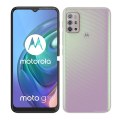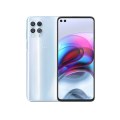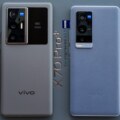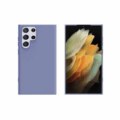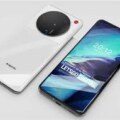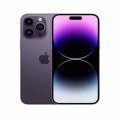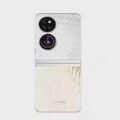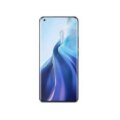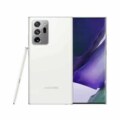- Whatisprice
- What is Today Mobile Price in Pakistan
- Mobiles
- Motorola Moto G50
Motorola Moto G50 Price in Pakistan & Detailed Specifications
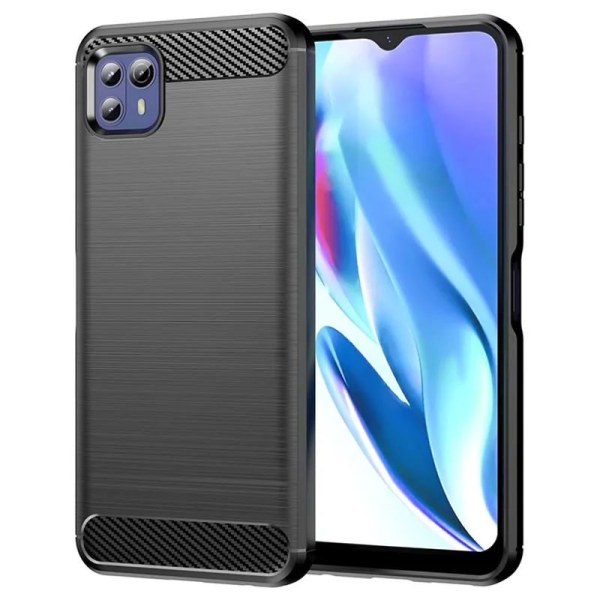


- CPU: Octa-core (2 x 2.0 GHz Kryo 460 + 6 x 1.8 GHz Kryo 460)
- RAM: 4GB RAM
- Storage: 64/128GB
- Display: IPS LCD Capacitive Touchscreen, 16M Colors, Multitouch
- Camera: Quad Camera: 48 MP, f/1.7, 26mm (wide), 1/2.0", PDAF + 5 MP, f/2.4, (macro), 1/5.0" + 2 MP, f/2.4, (depth), LED Flash
- OS: Android 11 OS
Motorola Moto G50 Specs & All Features
General
| Device Type | Android |
| Model | Moto G50 |
| Released | Apr 30, 2021 |
| Status | Available |
| Price | 43999 |
Design
| Type <strong>Design Type</strong> called form factor refers to a mobile phone's size, shape, and style as well as the layout and position of major components of phone. There are three major form factors seen in mobile phones => bar phones, folding phones and sliding phones. | Bar |
| Dimensions | 164.9 x 74.9 x 9 mm |
| Weight | 192 g |
| Colors |
Steel Gray, Aqua Green |
Network
| 2G Network |
SIM1: GSM 850 / 900 / 1800 / 1900 SIM2: GSM 850 / 900 / 1800 / 1900 |
| 3G Network |
HSDPA 850 / 900 / 1900 / 2100 |
| 4G Network |
LTE band 1(2100), 3(1800), 5(850), 7(2600), 8(900), 20(800), 38(2600) |
| 5G Network 5G Network | 5G SA/NSA |
| SIM <strong>SIM</strong> (Subscriber Identity Module) is a small card that contains mobile network subscriber's account information. This allows the phone using the card to attach to a mobile network. The SIM card is most commonly associated with GSM and UMTS mobile networks. Moving a SIM card from one phone to another allows a subscriber to switch mobile phones without having to contact their mobile network carrier. SIM cards can also be used by a phone to store limited amounts of data, such as phone numbers and text messages. | Nano SIM |
| Dual SIM | Hybrid Dual SIM, Dual Standby, (Nano-SIM) |
Display
| Display Type <strong>Display Technology => </strong> A number of display technologies and types used in mobile phones => TFT (Thin Film Transistor), IPS (In-Place Switching), OLED (Organic Light Emitting Diode), AMOLED (Active-Matrix Organic Light-Emitting Diode), Super AMOLED (an even advanced version of AMOLED), Resistive Touchscreen (Resistive touchscreens contain two layer of conductive material with a very small gap between them which acts as a resistance), Capacitive Touchsceen (Capacitive touchscreen technology consists of a layer of glass coated with a transparent conductor) | IPS LCD Capacitive Touchscreen, 16M Colors, Multitouch |
| Size | 6.5 Inches |
| Resolution | 720 x 1600 Pixels (~270 PPI) |
| Display Colors <strong>Display Colors</strong> is refers to the number of different shades of colors that the screen is capable of displaying => 64K colors, 256K colors and 16 million colors, Obviously 16M is highest available range of colors and better than others. | 16M |
| Pixel Density <strong>Pixel Density (PPI)</strong> is refers to the concentration of pixels on a particular display, measured in pixels per inch (ppi). Pixel density is calculated by dividing the diagonal pixel resolution of a display by its diagonal size, higher pixel density better display quality. | (~270 PPI) |
| Touch Screen | Yes |
| Features |
90Hz |
Media
| Audio Playback | Yes |
| Video Playback | Yes |
| Video Out | Yes |
| FM Radio | Yes |
| Alert Types | Yes |
| Ring Tones | Yes |
| Loudspeaker | Yes |
| Handsfree | Yes |
Camera
| Main Camera | Quad Camera: 48 MP, f/1.7, 26mm (wide), 1/2.0", PDAF + 5 MP, f/2.4, (macro), 1/5.0" + 2 MP, f/2.4, (depth), LED Flash |
| Image | Yes |
| Video | Yes |
| Camera Features |
Geo-tagging, Phase detection, touch focus, Panorama, Auto-HDR, Video (1080p@30/60fps) |
| Front Camera Front Camera | 13 MP, f/2.2, (wide), HDR, Video (1080p@30fps) |
Software
| Operating System <strong>OS => </strong> Every computer system run on a base software called Operating System (OS). Operating System controls all basic operations of the computer (such as smartphone, PDAs, tablet computers and other handheld devices). The Operating System allows the user to install and run third party applications (apps), apps are used to add new functionality to the device. | Android 11 OS |
Hardware
| Chipset <strong>Chipset</strong> is a group of integrated circuits designed to perform one or a more dedicated functions, often with real time computing constraints, Popular smartphones are equipped with more advanced embedded chipsets that can do many different tasks depending on their programming. | Qualcomm SM4350 Snapdragon 480 5G (8 nm) |
| CPU <strong>CPU</strong> (Central Processing Unit) mostly known as processors, CPU processes instructions in order to carry out certain functions that make your device operate properly. Processors are often described as the brain of computers, smartphones and tablets, Smartphones and tablets rely on processors to carry out their every task, Processors are an incredibly important factor in selecting any type of computing device, including your smartphone. | Octa-core (2 x 2.0 GHz Kryo 460 + 6 x 1.8 GHz Kryo 460) |
| GPU <strong>GPU</strong> (Graphics Processing Unit) is a single-chip processor designed to rapidly manipulate and alter memory to accelerate the creation of images in a frame buffer intended for output to a display, This includes things such as lighting effects, object transformations, and 3D motion. | Adreno 619 |
| RAM (Memory) | 4GB RAM |
| Internal Storage <strong>Internal Storage</strong> is a data storage space (flash memory) mostly used in smartphones, tablets and other electronic devices where operating system, apps, music, photos, videos, files and other user data Is stored. | 64/128GB |
| Card Slot <strong>Memory Card Slot</strong> is a special slot for inserting a memory card. Memory cards allow you to expand the phone's built-in memory, A memory card (sometimes called a flash memory card or a storage card) is a small storage medium used to store data such as text, pictures, audio, and video, for use on small, portable or remote computing devices such as mobile phones, mp3 players, digital cameras. | microSDXC (uses shared SIM slot) |
| Sensors <strong>Sensors</strong> are electronic components that detects and responds to some type of input from the physical environment. The specific input could be light, heat, motion, moisture, pressure and location, The output is generally a signal that is converted to use in computing systems, a location sensor, such as a GPS receiver is able to detect current location of your electronic device. |
Accelerometer, Barometer (market dependant), Fingerprint (rear mounted), Gyro, Proximity |
Connectivity
| Bluetooth <strong>Bluetooth</strong> is a wireless communications technology for exchanging data between mobile phones, headsets, computers and other network devices over short distances without wires, Bluetooth technology was primarily designed to support simple wireless networking of personal consumer devices. | v5.0 with A2DP, LE |
| Wi-fi <strong>Wi-Fi</strong> is a popular wireless networking technology using radio waves to provide high-speed network connections that allows devices to communicate without cords or cables, Wi-Fi is increasingly becoming the preferred mode of internet connectivity all over the world. | Wi-Fi 802.11 a/b/g/n/ac, dual-band, Wi-Fi Direct, hotspot |
| Wi-fi Hotspot | Yes |
| USB | USB Type-C 2.0, USB On-The-Go |
| GPS <strong>GPS</strong> The Global Positioning System is a satellite-based radio navigation system, GPS permits users to determine their position, velocity and the time 24 hours a day, in all weather, anywhere in the world, In order to locate your position, your device or GPS receiver must have a clear view of the sky. | Yes + A-GPS support & Glonass, GALILEO |
| NFC <strong>NFC</strong> (Near field communication) is a set of standards for smartphones and similar devices to establish peer-to-peer radio communications with each other by touching them together or bringing them into proximity, usually no more than a few inches. | Yes |
Data
| Data Feature Data Feature | GPRS, Edge, 3G (HSPA 42.2/5.76 Mbps), 4G LTE, 5G capable |
Battery
| Battery Type <strong>Battery Type => </strong> Cell phones run on various kinds of batteries depending on the manufacturer, phone size or shape and features. There are basically four types of cell phone batteries => Lithium Polymer, Lithium Ion, Nickel Metal Hydride and Nickel Cadmium. | Li-Poly (Lithium Polymer) |
| Capacity <strong>Battery Capacity</strong> is a measure (typically in Amp-hr) of the charge stored by the battery, and is determined by the mass of active material contained in the battery. The battery capacity represents the maximum amount of energy that can be extracted from the battery under certain conditions. | (Li-Po Non removable), 5000 mAh |
| Battery Features Battery Features | - Fast charging 15W |
Motorola Moto G50:
Motorola has launched the Motorola Moto G50 in Pakistan, offering a blend of modern features at an affordable price. Let’s explore its specs and what it brings to the table.
Motorola Moto G50 Specs:
The Motorola Moto G50 runs on Android 11 OS, providing a smooth user experience. It measures 164.9 x 74.9 x 9 mm and weighs 192 g, making it comfortable to hold and use. Available colors include Steel Gray and Aqua Green, catering to different style preferences.
Motorola Moto G50 Processor:
Powered by the Qualcomm SM4350 Snapdragon 480 5G chipset and an octa-core CPU (2 x 2.0 GHz Kryo 460 + 6 x 1.8 GHz Kryo 460), the Moto G50 ensures reliable performance for everyday tasks. The Adreno 619 GPU enhances graphics performance, suitable for gaming and multimedia.
Motorola Moto G50 Camera:
The Motorola Moto G50 features a versatile quad-camera setup on the rear: a 48 MP main camera for detailed shots, a 5 MP macro camera for close-ups, and a 2 MP depth camera for portrait effects. These cameras are supported by LED Flash and offer features like Geo-tagging and Panorama. The front-facing 13 MP camera captures clear selfies and supports HDR mode.
Motorola Moto G50 RAM and Memory:
With 4GB of RAM and a choice of 64GB or 128GB of internal storage, expandable via microSDXC card (uses shared SIM slot), the Moto G50 provides ample space for apps, games, photos, and videos.
Motorola Moto G50 Connectivity and Features:
Connectivity options include Wi-Fi 802.11 a/b/g/n/ac, Bluetooth v5.0, GPS with A-GPS support, and USB Type-C 2.0. It supports 5G networks, ensuring faster data speeds and smoother online experiences. NFC capability is also included.
Motorola Moto G50 Battery:
The Motorola Moto G50 is equipped with a 5000 mAh non-removable battery, supporting 15W fast charging. This ensures long-lasting usage without frequent recharging.
Motorola Moto G50 Features:
- Display: It sports a 6.5-inch IPS LCD capacitive touchscreen with a 90Hz refresh rate, offering vibrant colors and smooth scrolling.
- Design: Featuring a water-repellent design with a glass front and plastic back, the Moto G50 combines durability with a modern aesthetic.
- Audio: It includes a 3.5mm audio jack and Dolby Audio for enhanced sound quality.
In conclusion, the Motorola Moto G50 presents a compelling option in the mid-range smartphone market with its balanced performance, good camera capabilities, large battery, and modern connectivity options. Whether for work or entertainment, this device caters to the needs of users looking for a reliable and feature-rich smartphone at an accessible price point.
For those considering the Motorola Moto G50 price in Pakistan and its full specs, it offers solid value with its combination of features and performance.


